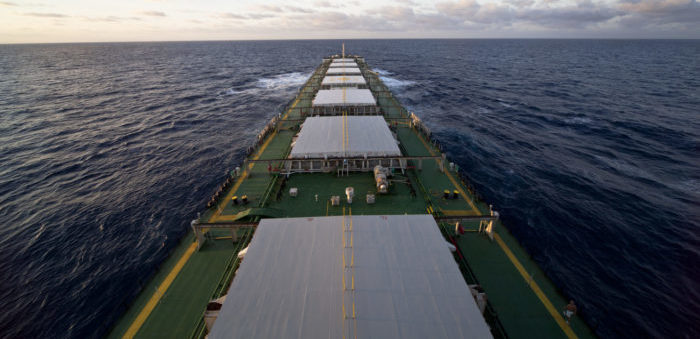Demolition of dry bulk ships in the first four months of 2019 was 120% higher than in the same period of 2018, an increase mostly driven from demolitions of Capesize ships, up from 1.1 m DWT between January and April 2018 to reach 3.4m DWT in the first four months of 2019.
The 18 Capesize ships demolished this year, sailed away from the poor market conditions faced by these larger vessel sizes since 25 January 2019, explained Peter Sand, BIMCO’s Chief Shipping Analyst.
In the almost three months since then, Capesize earnings have remained below USD 9,000 per day, falling to a low-point USD 3,460 per day on 2 April 2019.
Capesize earnings have averaged USD 8,079 per day since the start of the year, a loss making level with BIMCO estimating that a Capesize ship needs to earn around USD 15,300 per day to be able to cover daily costs.
In 2019, the Capesize market has faced several shocks, including the dam collapse in Brazil and bad weather in Australia, but it also faces more long term challenges such as the falling Chinese iron ore demand.
Due to the falling demand for commodities traditionally carried by Capesize ships, limiting fleet growth will become even more important if freight rates are to be profitable. For that reason, rates of demolition of Capesize ships in 2019 and 2020 are essential to addressing the fragility of the market balance,
…says Peter Sand, BIMCO’s Chief Shipping Analyst.
Despite the increase in demolitions from last year, the Capesize fleet grew in the first four months of 2019, due to the delivery of
- 5 Valemax (380,000 – 400,000 DWT),
- 6 VLOCs (200,000 – 350,000 DWT),
- 1 standard Capesize (140,000 – 190,000 DWT ) and
- 1 baby Capesize ship (100,000 – 130,000 DWT), amounting to 3.8m DWT entering the already crowded market.
In addition to this, deliveries scheduled for the rest of 2019 as well as 2020 and 2021 paint a bleak outlook for the market balance.
A further 6 Valemax, 46 VLOCs, 17 standard Capsizes, and 2 baby Capes are slated to be delivered in 2019. A mammoth 24.8m DWT (3 Valemax, 79 VLOCs, 20 standard Capsizes and 8 baby Capes) has been ordered to be delivered in 2020, and deliveries of 8m DWT in 2021 has already been ordered.
In 2018, deliveries of Capesize ships amounted to 14.3m DWT.
Because of delays and cancellations, BIMCO expects that around 11.1m DWT will be added to the fleet in the rest of the year, followed by 20.4m DWT in 2020. Demolition activity may rise somewhat with the upcoming implementation of the IMO’s 2020 sulphur cap and Ballast Water Management convention. Even if new regulation leads to more demolition, the market for large dry bulk ships is likely to face continued pressure as there is little potential for substantial growth on the demand side,
…says Peter Sand.
Prospects for dry bulk ships smaller than Capesize, are less concerning, as the market conditions are more stable.
Despite some disruption to trade lanes due to the trade war, the markets for these smaller ships face fewer disruptions on both the demand and supply side.






























































